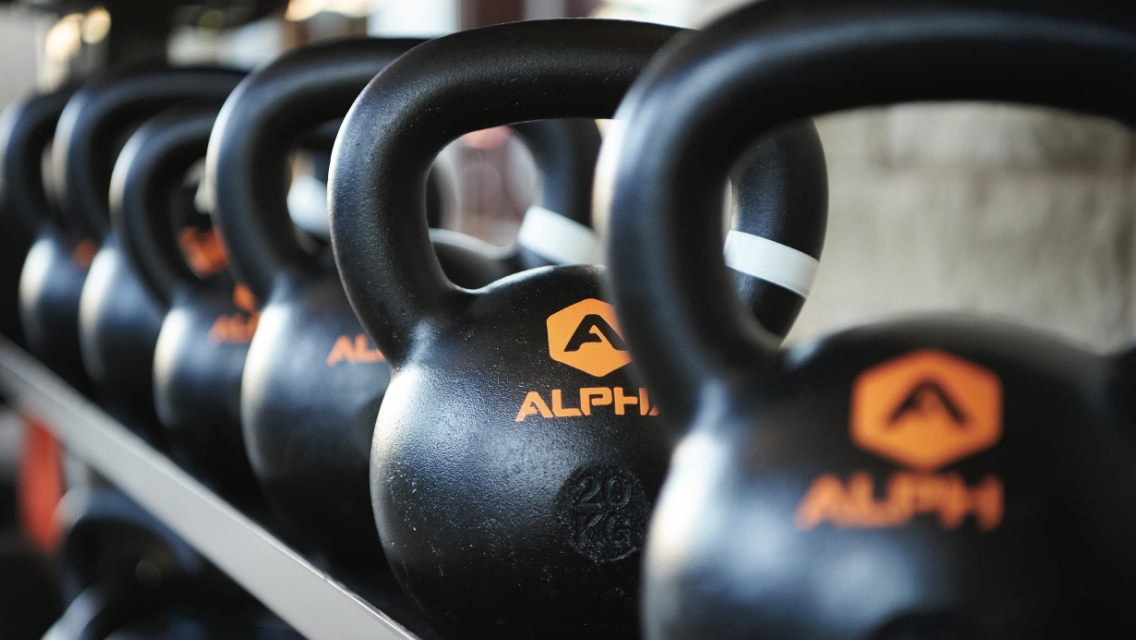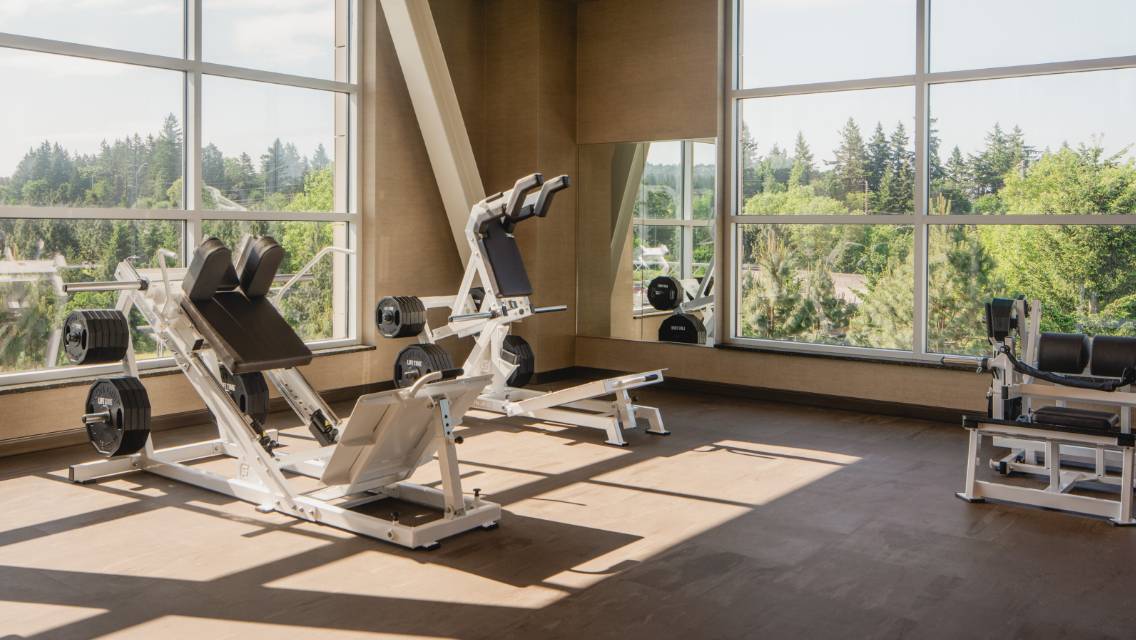We’ve all been in a rut with our fitness routine at some point. When that happens, it can be tempting to switch things up completely, but at times, that may not be the best thing for our results. There’s a fine line between implementing more variety into your routine and adding just enough to also maintain an effective, consistent workout program with increasing intensity over time.
While variation is important for keeping our exercise sessions feeling fun and fresh, there is notable value in sticking with the same type of workout for several months at a time.
For one, we’re more likely to stay in a reliable groove of exercise when it feels familiar. Secondly, it sends a consistent stimulus to our muscles to help drive meaningful fitness adaptations (i.e., building lean tissue, improving strength, losing body fat, and increasing performance) which may not happen with approaches with a too-wide assortment of workouts.
That being said, it doesn’t mean your efforts shouldn’t adapt at all over time. The continued pursuit for health and betterment relies on ensuring our bodies are challenged appropriately. One of the most effective ways you can do that is by increasing resistance in your strength-training program.
So, how do you know when to stick with the norm or kick it up a notch? Luckily, there are some no-fail signals when it’s time to make a change. Here are five signs you need to add more weight to your workout.
1. You don’t feel tired when you’re done.
It can be tricky when toeing the line of challenging yourself through exercise while avoiding over-training. Although your overall daily energy will likely feel higher when you’re in a solid exercise routine, it’s ideal — and expected — to feel a bit fatigued as your workout concludes. And assuming you replenish well with adequate recovery and post-workout fuel, the fatigue you feel after an exercise session should be short-lived.
In essence, it’s OK to feel relieved, and a little exhausted, immediately when you finish your daily workout. But if you’re leaving it feeling the same way as you did going into it, you likely need to make it harder.
2. You’ve done this workout before.
Exercise volume typically refers to the number of repetitions you do multiplied by the number of sets you do, then taking that number and multiplying it again by the weight you use. Ideally, you want to head into a workout you’ve done before with the assumption that you’re going to have a higher-volume workload than the last time.
Any of these variables — reps, sets, and weight — can be manipulated to progressively create more good stress from your routine (which is needed to see desired changes). However, the amount of weight you use can often feel like the most straightforward one to increase. In my experience as a trainer, most people working out on their own are taking it too slow and tend to underestimate their capability.
In the first two years of consistent strength training at least three days per week, most people can expect to make almost-linear progression with how much weight they can lift. It’s normal for this to level out once you’re highly trained, or else we would all end up having limitless Herculean-like strength.
Pro tip: If you’re not tracking or logging your workouts, consider starting. Keeping a log of dates, exercises, sets, reps, and weight is eye-opening, and it’s hard to know how you’re progressing (and if you’re beating your last workout) unless you do so. One of my favorite tools to track my workouts is through the Life Time Training App.
3. It doesn’t burn.
“Feel the burn” is more than just a dismissible phrase.
Strength-training workouts usually have prescribed repetition ranges for each exercise. For example, your plan might advise to barbell back squat for 12 to 15 repetitions, deadlift for six to eight repetitions, and so on.
If you’re consistently hitting the top end of the recommended repetition range in a well-designed workout program, it’s time to add more weight to that particular lift. I like to use a +/- two-rep rule. Here’s how it works:
If you can do two reps less than the target, continue your current efforts. If you’re meeting or are two reps over your target, it’s time to progress. For example, if I want you to do eight repetitions and you can only do six, we stick with that weight for the time being. But if you’re consistently hitting the full eight reps or if you can do 10 reps at any given time, we need to increase your load in order for you to see improvements.
One caveat here: The recommended repetitions for a given movement can inadvertently have you underestimate your own strength. In a workout, I’ve had clients tell me they feel like they can’t reach the target number of reps. But in a separate session, I incorporate the same movement and ask them to do as many reps as possible. Ten times out of 10, they surpass the previous range I recommended — and are shocked when I let them know how much stronger they are than they originally thought.
In short, the last rep of a set ought to burn and challenge you if you’re pushing yourself and lifting enough weight.
4. You’re bored.
Nothing busts workout boredom like hitting specific milestones and personal records, or PRs.
I’ve found that, at first, clients whose primary focus is on body composition tend to pay less attention to the quantifiable aspects of workout volume, such as how much weight they lift in a given exercise. Because of this, workouts can end up feeling like a potential boring means to an end — instead of a fun challenge with a “get after it” mentality.
However, in the last decade, I’ve observed a new movement in fitness: people of all ages and fitness backgrounds prioritizing their inner athletic potential and strength for the first time.
When you start tracking your workouts and challenging yourself to get stronger as the main priority (by lifting heavier weights), there’s an intrinsic, dopamine-fueled satisfaction that motivates you to continue. You begin to compete against yourself, and suddenly each workout is an opportunity for self-betterment.
As a bonus, shifting focus to strength often supports overall fat loss as well. For those looking to change their physique, it’s a win-win.
5. You’re not progressing.
This may sound obvious, but from my experience with clients, it’s worth noting.
If your program or exercise approach isn’t challenging enough, it’s possible to be very active without actually progressing toward your goal — whether that be body composition, strength, or performance. No matter which of these three categories you align most with, you need continued challenge to get there.
When it comes to how much weight you’re lifting, know that there’s never a point when it’s time to check the box as “enough” weight. This isn’t said to discourage you, but to let you know that if at any time you’re totally static in how much weight you’re lifting, it’s likely that your progress will stall, or even go backwards.
I’m a firm believer that regular strength training — when part of a well-balanced and properly-designed exercise routine — is one of the most transformative and impactful things you can do for your health. Increasing your weight can often feel hard, but doing so when appropriate reaps benefits and reward that are likely beyond your expectation.





